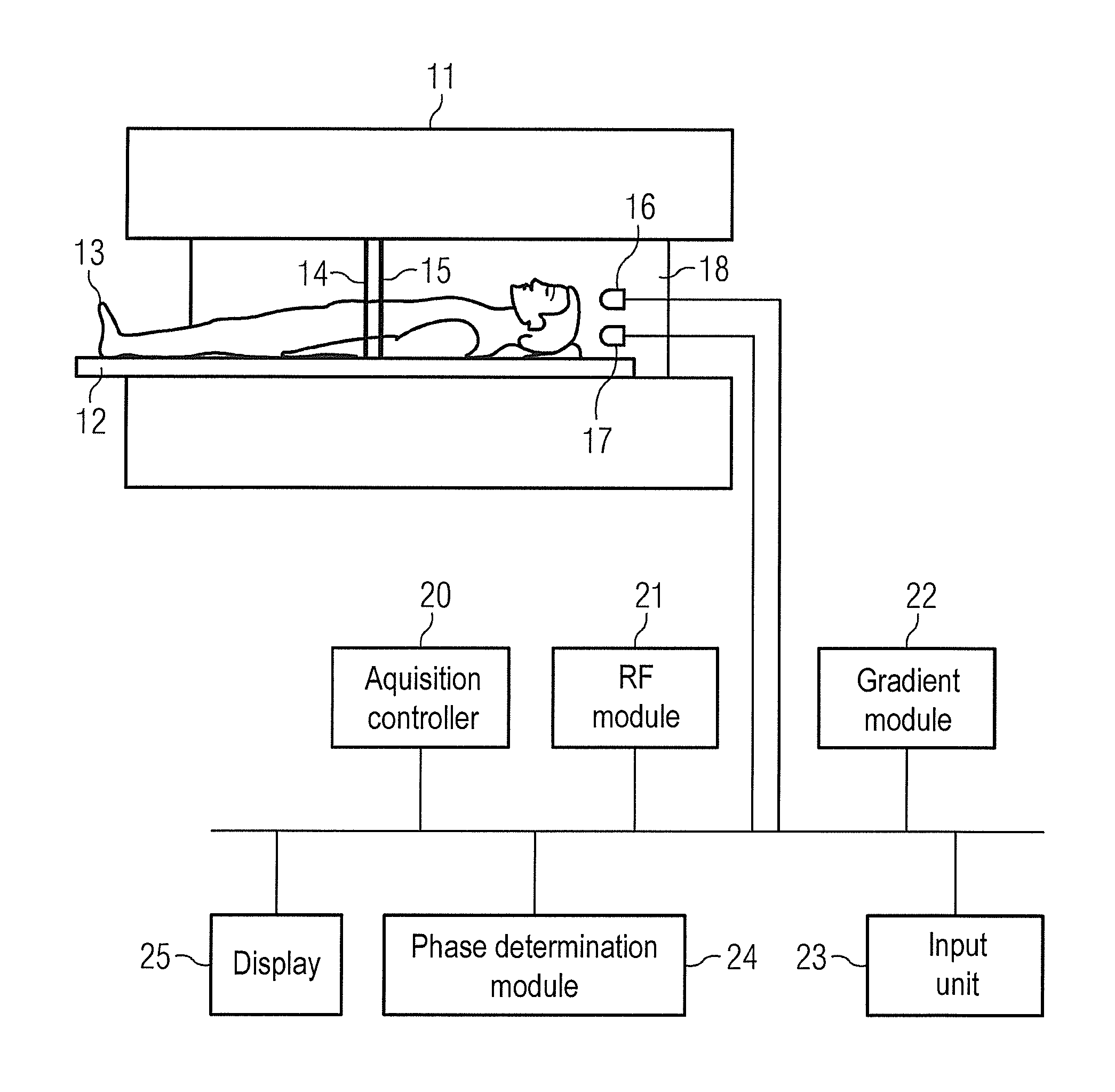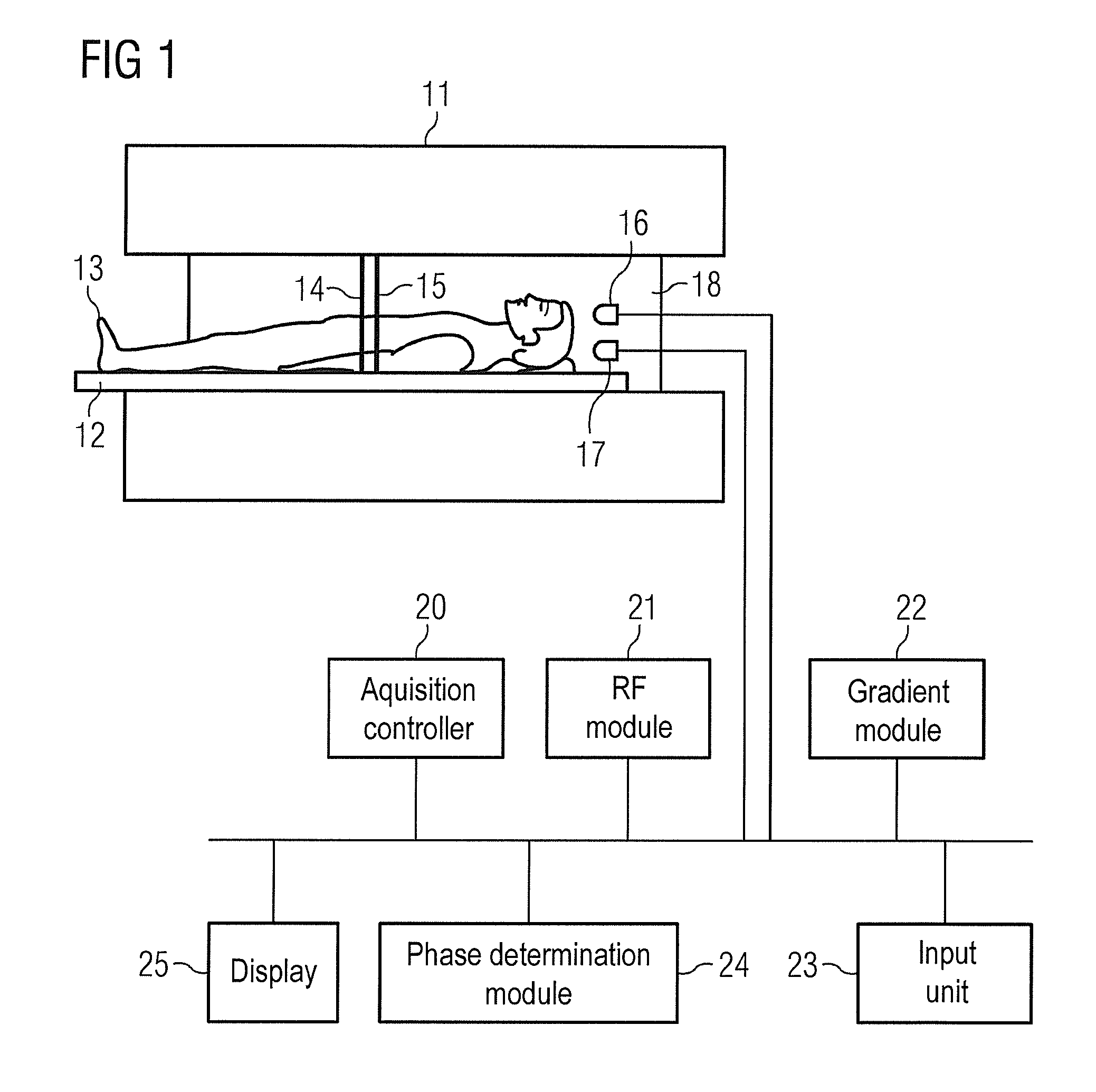Slice-specific phase correction in slice multiplexing
- Summary
- Abstract
- Description
- Claims
- Application Information
AI Technical Summary
Benefits of technology
Problems solved by technology
Method used
Image
Examples
Embodiment Construction
[0039]An MR system is schematically shown in FIG. 1, with which slice-individual gradient correction moments can be impressed on the individual slices according to the invention in a slice multiplexing method. In the present invention, the gradients in question are the magnetic field gradients for spatial coding. An MR system 10 with a magnet 11 to generate a polarization field B0 is shown in FIG. 1. An examined person 13 arranged on a bed 12 is driven into the MR system. Radio-frequency coil arrangements 16 and 17 with which the MR signals can be detected from the two different slices 14 and 15 are schematically shown to detect MR image data from said first slice 14 and second slice 15. The MR system furthermore has a gradient system 18 in order to achieve a spatial coding with the RF pulses emitted by the RF coils 16 and 17. As is known, the resulting magnetization in the two slices 14 and 15 points in the direction of the basic magnetic field before radiation of RF pulses. Via th...
PUM
 Login to View More
Login to View More Abstract
Description
Claims
Application Information
 Login to View More
Login to View More - R&D
- Intellectual Property
- Life Sciences
- Materials
- Tech Scout
- Unparalleled Data Quality
- Higher Quality Content
- 60% Fewer Hallucinations
Browse by: Latest US Patents, China's latest patents, Technical Efficacy Thesaurus, Application Domain, Technology Topic, Popular Technical Reports.
© 2025 PatSnap. All rights reserved.Legal|Privacy policy|Modern Slavery Act Transparency Statement|Sitemap|About US| Contact US: help@patsnap.com



